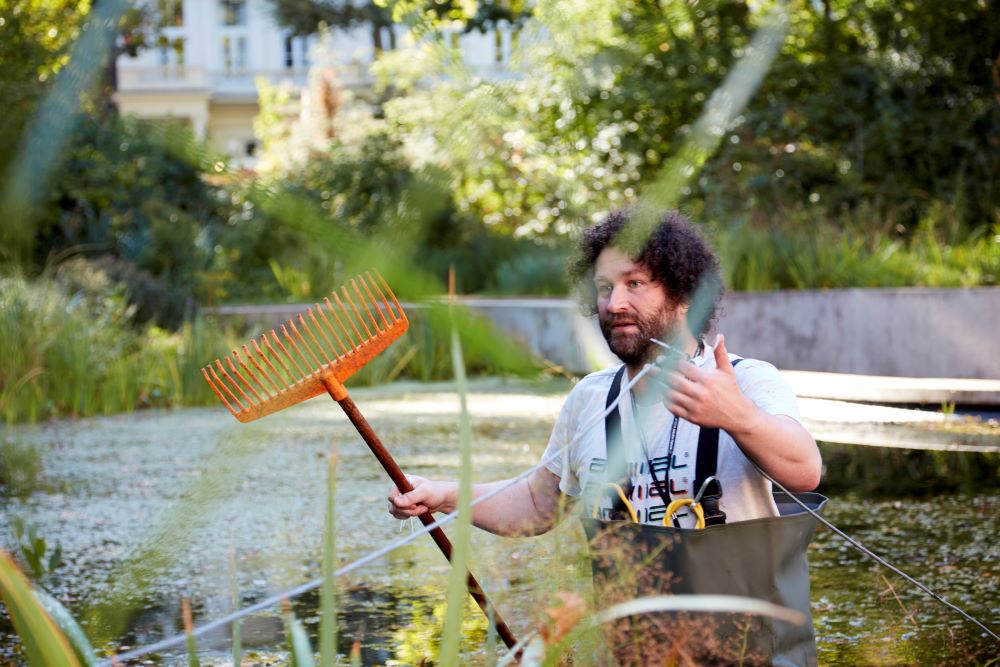Ed Baker FLS ARCS

Interdisciplinary researcher using sensor networks and acoustics to monitor biodiversity and environments.
Latest publications
A Gateway to Nature: The Urban Research Station at London’s Natural History Museum
Catalysts for change: Museum gardens in a planetary emergency
Bioacoustic and Ecoacoustic Data in Audiovisual Core
Good practice guidelines for long-term ecoacoustic monitoring in the UK
Latest blog posts
- Announcing ReVAMP: Bringing Vamp Audio Analysis Plugins to R
- Urban Nature Project Wins Gold at Wood Awards
- Voices for Change: A Night of Climate Action
- AI has an ASCII grasshopper problem
- Urban Nature Project Wins Landscape Institute Award
Talks
22/04/2025 - Urban Research Station
03/03/2025 - Impacts of Urban Noise
22/01/2025 - TDWG Kingston Biodiversity Network
05/12/2024 - NHM x Natural England
Notes
Some thoughts on:
Sensor network install
This page documents the installation of the sensor network part of the Urban Research Station at the Natural History Museum.
First-fix
The first-fix phase of the sensor network installation involved installing the infrastructure to support the sensor devices. This included running rigid ducting, installing waterproof Ethernet sockets, and installing groundscrews to support the devices. This work was mostly completed by the building contractors during the construction phase of the Urban Nature Project. The ground screws were installed by the Urban Research Team.

ToDo: illustration of ducts, conduit, devices.
Waterproof Ethernet sockets were installed in the inspection chambers during the construction phase.
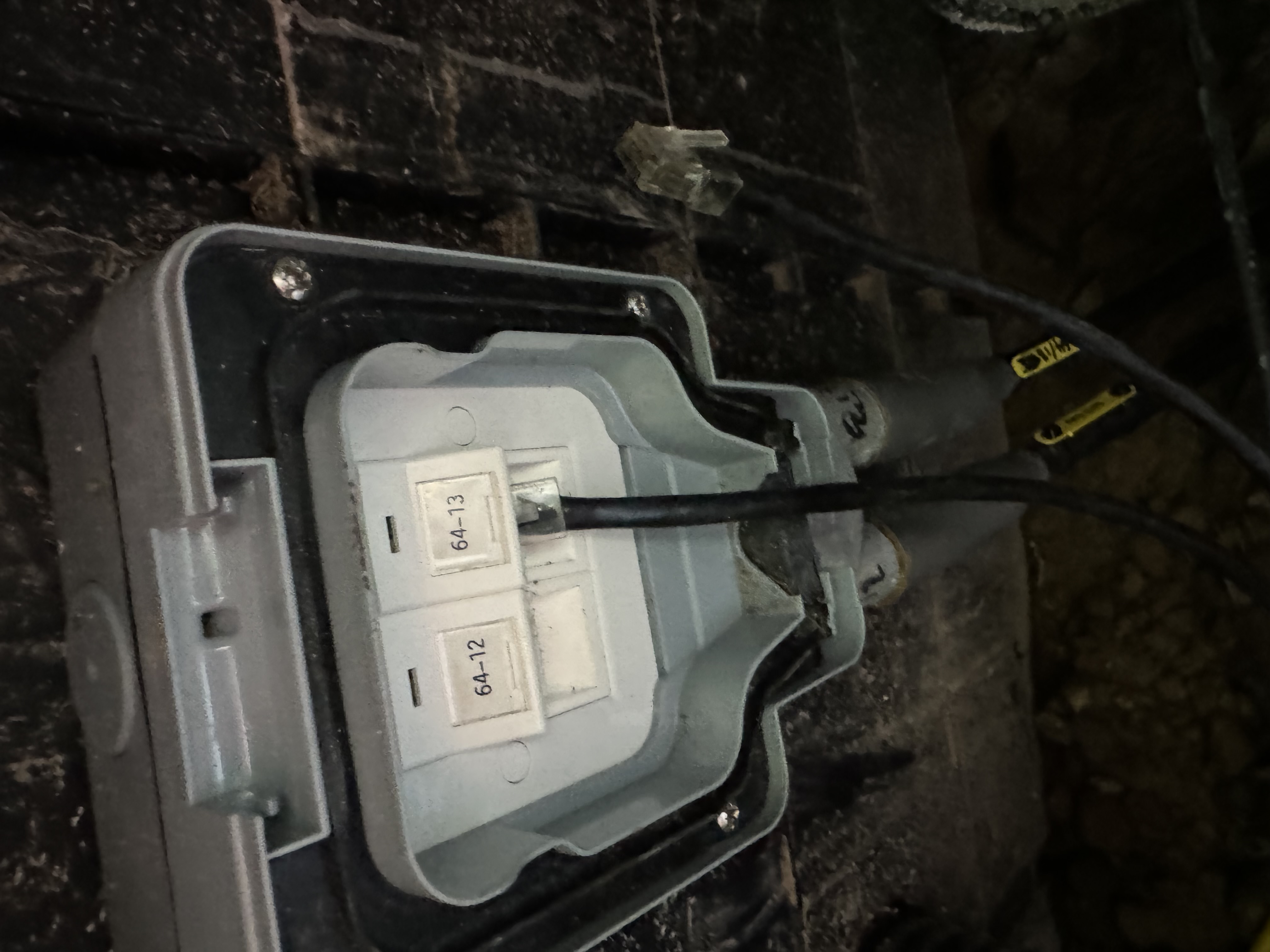
Rigid ducting was run from the inspection chambers into the garden beds. The ducting emerges in a garden bed and needs to be cut below ground level.
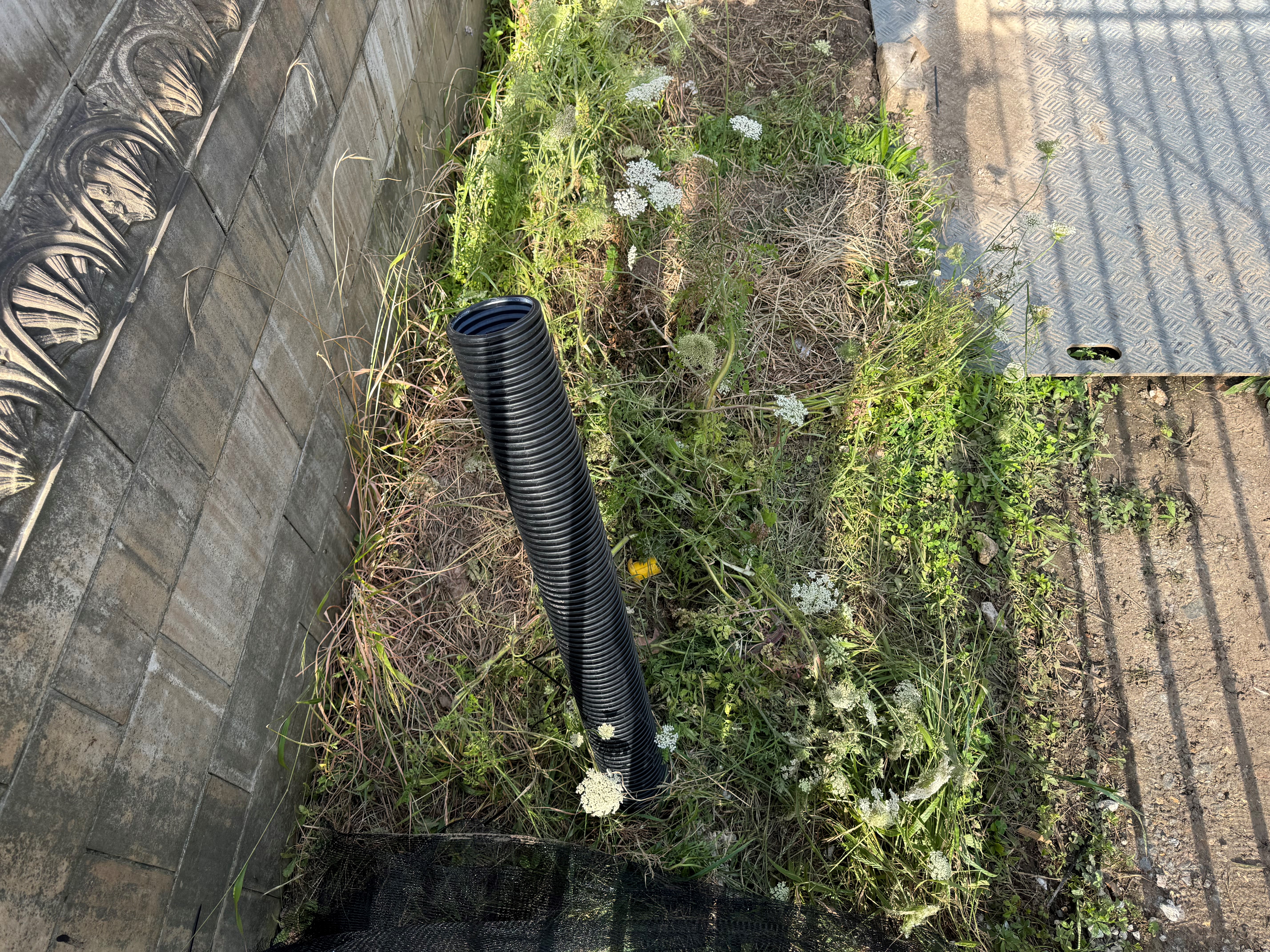
The ducting is cut and a cover placed over to prevent soil ingress. Conduit is run from the duct end to the sensors to protect the cables from damage during landscaping work.
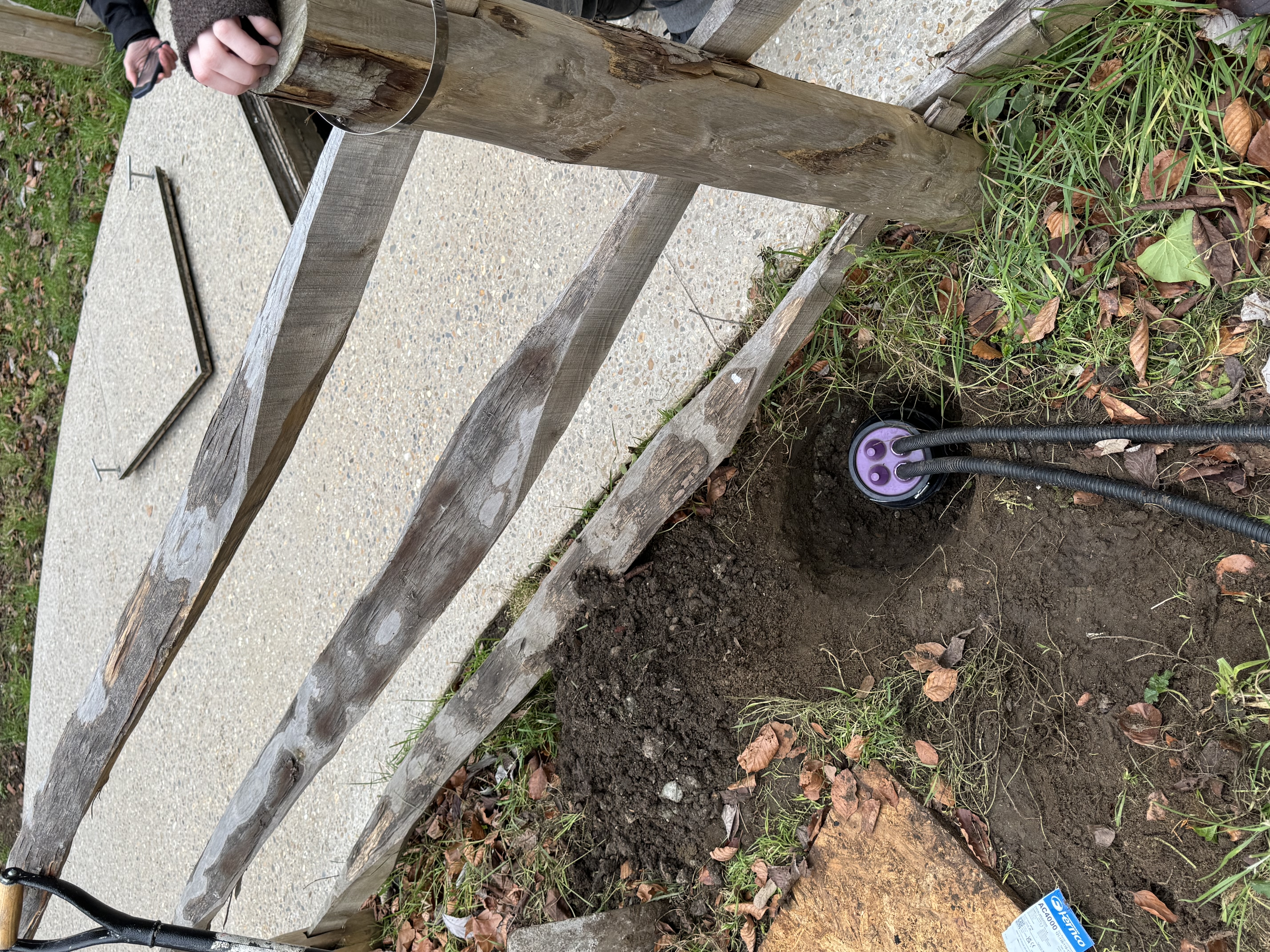
Groundscrews were installed in the garden to securely support the sensor devices.

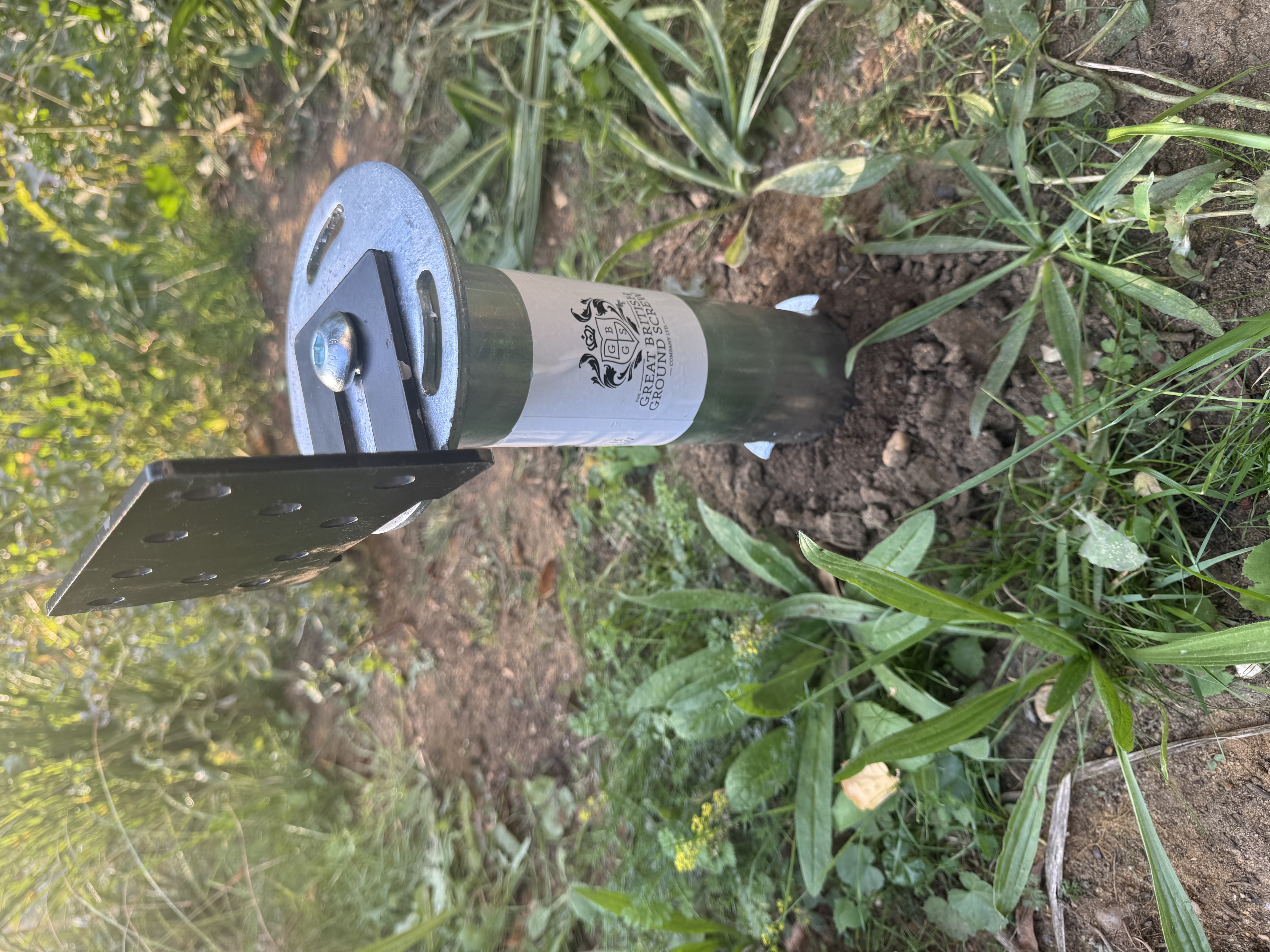
Second-fix
The second-fix phase involved installing the sensor nodes themselves. The sensor nodes are Raspberry Pi based devices inside plastic enclosures. The enclosures are mounted on the groundscrews and connected to the Ethernet sockets in the inspection chambers. Some sensors (e.g. microphones) are mounted within the enclosures and are isntalled at this stage.
Ethernet cables between sensor nodes and Ethernet sockets are installed in steel-reinforced flexible conduit to protect them from later landscaping work. The conduit is buried below ground level to protect it from damage.
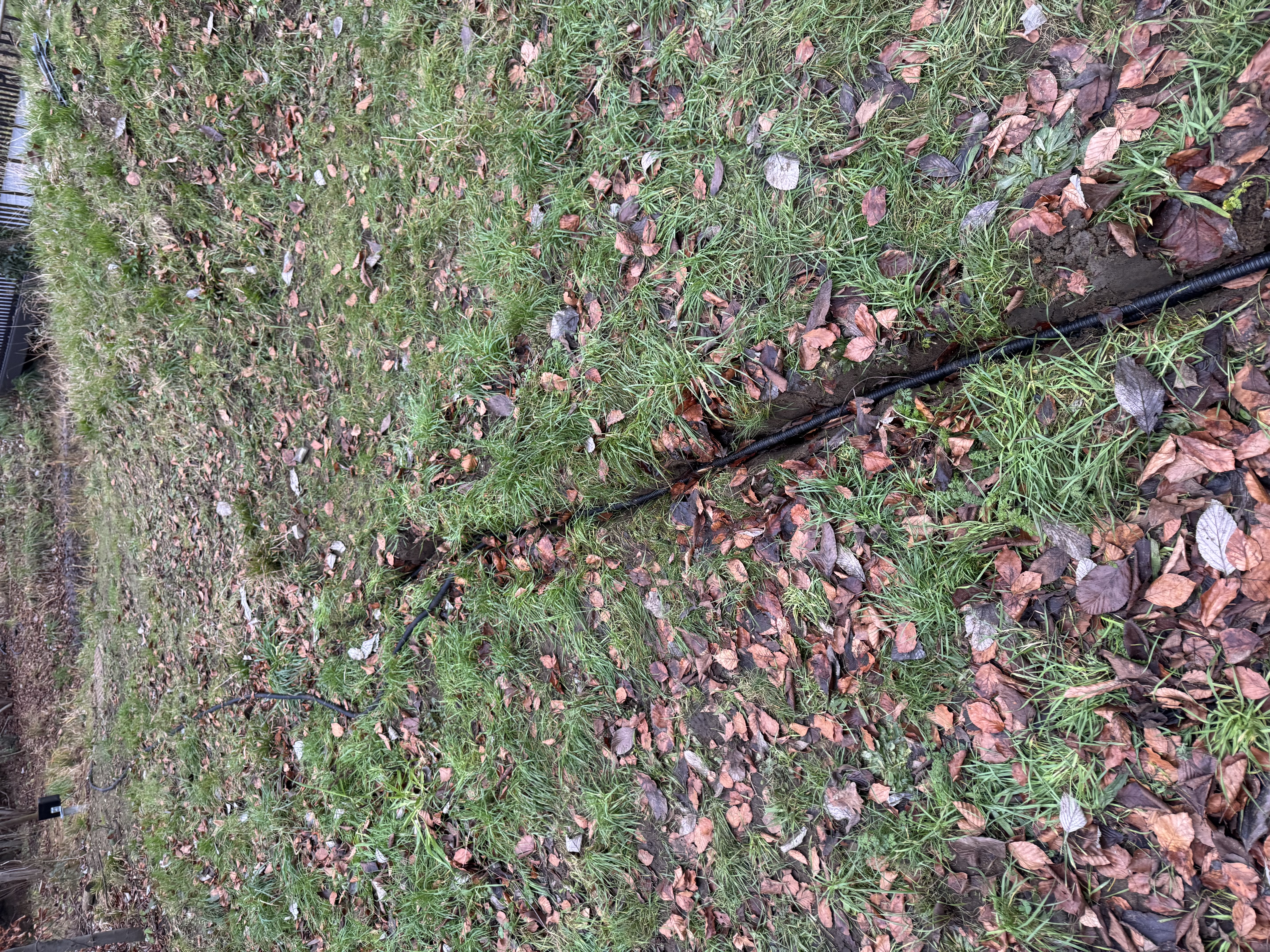
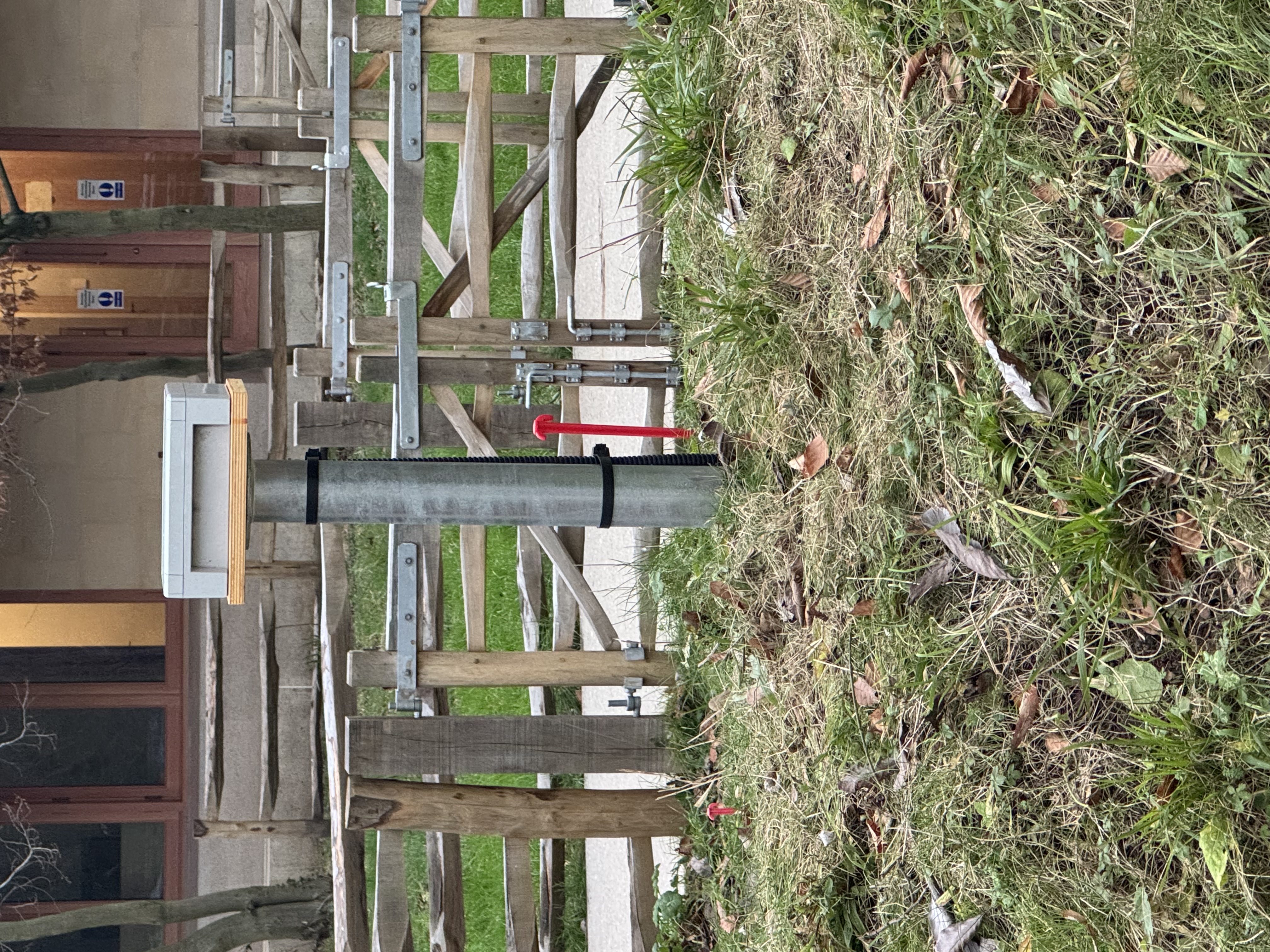
Third-fix
The final phase of the installation is the placement of additional sensors within the landscape. These sensors cannot be co-located with the sensor nodes as they need to be placed in specific locations, such as in the water column or on trees. These sensors are connected via control cables to the sensor nodes for power and data transfer. The cables are protected either by steel-reinforced flexible conduit or using Copex (a type of flexible plastic conduit) depending on how likely they are to be affected by landscaping work.
Suspending sensors in the water column
